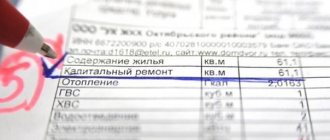Installing an antenna on the roof of an apartment building (ABC) is a prerequisite before commissioning a residential building. The main function of the antenna is to provide residents with a TV signal. The collective antenna is a paid service. To watch TV shows with its help, you will have to make a monthly payment. Sometimes this is a separate amount credited to the account of a specialized organization, more often the payment is included in the receipt for the utility bill. Prices may vary in each region. It depends on the company providing the service. The question often arises: who will make the repairs if the antenna breaks and will you have to pay extra? Let's try to find answers.
What is a collective antenna?
In terms of its purpose, a collective antenna is absolutely no different from a conventional receiver. The difference is manifested solely in the hardware configuration. The collective antenna has a more complex structure:
- receiver - a device that receives a digital signal from a television tower;
- amplifier – significantly increases the range of the antenna;
- distribution system is a special device that allows you to set up television for all residents of a multi-story building.
There are two cables available to the consumer - analog and digital. The collective antenna is capable of receiving digital channels. However, the quality of the signal will largely depend on its direction and distance from the TV tower.
If there is only one television tower in the area of reliable reception, then the collective antenna must be directed towards the repeater. When there are several towers nearby, you need to point the antenna towards the repeater, which provides transmission of the channels of the second multiplex.
Users will definitely not have any problems setting up digital TV. Simply connect the antenna cable to the appropriate connector on your TV or receiver that supports the DVB-T2 standard. When the cable is connected, go to settings to start automatic channel search.
Where to go if you need antenna repair
When the quality of the TV signal is lacking, many people have a question: who will help solve the problem. If, according to the terms of the contract, the management company or the management of the house is responsible for maintenance and issues of malfunctions, then it is they who need to report the malfunctions.
It happens that large management companies have special services in their structure that are responsible for repairing antennas. In most cases, management organizations enter into contracts with organizations that carry out installation, maintenance, repair work and replacement of failed devices.
Pros and cons of a collective antenna
The main purpose of this type of receiver is to provide all residents of apartment buildings with digital TV. The collective antenna in Moscow allows you to configure all channels. It will become an effective analogue of an indoor TV antenna. Experts highlight the following advantages of this device:
- high quality reception. The collective TV antenna is installed by specialists, not by the residents of the house. They know the specific location of the area, so they choose the optimal point for installing the receiver;
- free service. The cost of antenna repair and installation is borne by the housing utility company;
- users will be able to simultaneously set up analogue and digital television. In the future, you can connect pay cable TV;
- A resident of an apartment building will be able to set up TV broadcasting immediately after arrival. No additional equipment required.
There is only one drawback - the subscription fee for use, which is initially included in utilities.
Do I need to connect the set-top box to a common device?
If the user lives in an apartment and a public antenna is installed on the roof, then you can try to connect to it. But it is worth remembering that most of the devices were installed back in Soviet times. Such antennas have not been repaired for a long time. In practice, it has been shown that such equipment can only receive signals in decimeter waves.
Is it worth buying it and how to retune the TV?
All people who do not have Smart TV or satellite television will have to buy set-top boxes. It is also worth considering the advantages and disadvantages of this device. You should not purchase a digital set-top box if :
- The viewer has a modern LCD TV.
- Does not accept small buttons and multiple remote controls (applies to older people).
- Residents have already chosen pay TV from Internet providers.
- Subscribers who have installed satellite dishes.
To opt out of a shared antenna, you need to find out which organization provides the service. The contract between the operator and the subscriber can be terminated at any time , but only if there are no debts.
You can find out who maintains the collective antenna from the management company or homeowners association. There is also an option to contact the Unified Settlement Center.
- First of all, you need to find out who is servicing the device.
- Call the company or go to the official website to find out how to apply for a waiver.
- Submit an application at the operator’s office or through your personal account. In some cities this can be done through the MFC.
- Wait for a worker to come and disconnect the apartment from the antenna.
The nuances of watching TV through a shared antenna
A collective antenna for digital television provides broadcasting of channels under the same contract as in the case of an individual connection. The intermediary is the housing company. The standard tariff plan, available to all subscribers, includes federal TV channels, as well as several regional programs.
As for paid channels, narrowly focused programs are mainly presented here - sports broadcasts, music videos, etc. An individual cable television connection allows you to select the set of necessary channels. The use of a collective antenna assumes that the subscriber selects one of the available paid tariffs.
How to connect digital TV using a collective antenna
First you need to make sure that a collective television antenna is installed on the roof of a multi-story building. If it is missing, then you can order the installation of the device, but first this point must be agreed upon with other residents. How to connect digital TV without a common antenna? You can use a regular indoor receiver.
To set up digital television in Moscow via a collective antenna, contact representatives of the company responsible for concluding the relevant agreement. The subscriber will be offered affordable tariffs. Depending on the list of channels, the subscription fee will change. To tune in channels, run an automatic search on your TV or receiver.
Digital and analogue television together
In many regions, only the first multiplex operates, which includes 10 TV channels. In such situations, a common house antenna is not capable of providing digital television. The problem is solved by setting up analog channels.
To tune in analogue and digital channels, use a community antenna. Of course, much will depend on the year of manufacture, configuration and model of the device. However, practice shows that common TV antennas can be used to simultaneously receive analog and digital signals. Signal transmission is carried out over one cable. Branching is carried out directly in the apartment. To do this you need to install a special adapter.
Analog TV and digital TV differ in the specifics of broadcasting. The signal is transmitted from different repeaters. If the collective antenna provides DVB-T2 digital television in good quality, you can contact the appropriate organization to deactivate the broadcast.
Using only one type of broadcasting will allow the subscriber to save on utility bills.
However, practice shows that residents of houses are charged a relatively small subscription fee. If the analog TV service is turned off at your request, then specialists will attach a special device to the distributor that blocks the signal. The cable is located in the apartment. The user will be able to restore analog TV in the future if such a need arises.
map.rtrs.rf:
03/08/2019 at 02:23
Antenna question: how will analog shutdown affect cable companies?
03/06/2019 > 18:00 Author: Derik Alexey
After the launch of terrestrial digital television, the authorities started talking about restoring the fleet of collective reception antennas.
In different regions, the situation with antennas, as well as the need for them, is different, but one thing unites the regions - local cable operators react very painfully to the “antenna” initiatives of the authorities. Let's figure out why.
WHERE IS SKPT, WHERE IS SKT
Collective reception antennas are still mandatory engineering equipment for apartment buildings.
Technically, they should be not only in all already built houses, but also in those under construction - without the SKPT (collective television reception system) they cannot pass official acceptance.
But, like the notorious radio point, this infrastructure is not really in demand everywhere.
In some regions, collective reception systems exist and are serviced by the same cable operators, in others they have long been abolished, replaced by a cable network, and in others, this business has been abandoned altogether.
By the way, many of the cable networks that Telesputnik wrote about began with enthusiasts taking collective reception networks at their place of residence under their wing: updating the cable and the antennas themselves, connecting apartments, and then combining several identical network segments into a single structure .
As a headend appeared in the network, providing additional channels (for example, received from a satellite), operators gradually received licenses.
Apparently, this is how the idea of the identity of SKPT and SKT took root in our heads.
One operator known to us - a member of the Regional Telenetwork - received a license in 2000 without adding channels to the network - only servicing collective reception systems.
He was forced to take this step by the tax authorities and Roskomnadzor (at that time Gossvyaznadzor), declaring SKPT a cable television network in accordance with the explanatory letter of the Gossvyaznadzor Department.
Since this letter was not canceled, over the course of 15 years he successfully renewed his “cable” license 3 times and passed the appropriate checks.
JOINING RTRS
Operators actively used over-the-air antennas to receive signals from local channels when relaying them to the network, especially when it came to small segments of the network, the connection of which to a single structure was not financially feasible.
The situation changed after so-called points of accession to RTRS appeared on the agenda.
From this moment on, cable operators have the right to take the signal of 20 free channels (and the 21st regional one - cable “21 Buttons”) not from the air, but only from a source agreed with RTRS in the network’s service territory, paying for the connection project and monthly line maintenance.
Naturally, even after the service areas of cable operators were clarified, not everyone found it profitable to run fiber to the local RTRS branch.
The funniest situation looked exactly in the service area of the operator mentioned above - for its 772 collective antennas, not connected into a single network, RTRS issued approval for connection, despite any explanations.
Subsequently, the operator sorted out this contradiction, but only after changing the license. In principle, he has not yet renounced the license, although the operation and maintenance of the system for collective reception of a digital signal has been recognized as economic activity that does not require licensing.
However, this raised more questions than answers.
CERTIFICATION INSTEAD OF LICENSING?
It is not so easy to separate operator activities from the maintenance of collective reception systems, especially in the regions.
Many operators with cable licenses continue to service certain parts of the antenna fleet - this is a significant part of their business, which they would not want to lose, especially since they carried out the modernization of outdated hardware at their own expense.
It would seem that there is no need to separate operator activities from servicing SKPT, but the launch of on-air digital data has attracted increased attention to this issue.
At a meeting of the Regional Telenetwork Council, which was held in February 2019 in St. Petersburg, operators in the region noted that municipal authorities had already approached them either for information about the condition of the antenna park, or with an order to put it in order and report almost weekly on the progress work.
So far, cable companies are limiting themselves to reports that residents are receiving television and are not making any complaints.
Such an answer should satisfy the authorities, because their concern is the absence of social tension in connection with the shutdown of the analogue.
But the cable industry itself is clearly not satisfied with the way the question is presented.
Of course, they are ready to work - at least a third of the operators gathered at the council expressed ideas not just to participate, but to lead the process of modernizing the antenna fleet (according to the principle “If you can’t resist, lead”).
The problem is different - the unclear legal status of the antenna industry.
In essence, SKPT is considered common property.
This means that anyone who restores it is actually making a gift to the homeowners.
Previously, operators felt protected in this matter, since a “cable” license was required to work with the network.
You can’t just get it off the street, that is, no third-party company will unexpectedly come to their place.
In the absence of licensing, nothing prevents the management company from saying goodbye to the cable operator forever after accepting the SKPT, inviting anyone to service the latter or refusing service altogether - choosing some enterprising resident who will go to the roof and monitor as necessary.
SKPT is a complex engineering system, which, according to the rules, must be maintained by specialized organizations.
But how to create a barrier for laymen on the way to these systems?
Cable operators have not yet agreed on whether it is worth insisting that servicing CPTS should be their priority.
Even if the issue of protecting their position is resolved, the problem of free airtime remains.
Advertising of the RTRS project instilled in the minds of subscribers the confidence that 20 channels were provided to them for free.
Viewers don’t really think about what technical means are used for this, so the fee for servicing a collective antenna is not an obvious fact for them.
Questions still arise, like, on what basis do you charge for network maintenance if Putin said that 20 channels are free?
The Ministry of Telecom and Mass Communications is on the side of the cable companies in this matter: in an explanatory letter sent in December 2021 to AKTR President Yuri Pripachkin, it is clearly stated that there are only two ways for a subscriber to receive a package of free channels from a pay television operator under an agreement: as part of a paid package or with payment for access to the network and other related services.
That is, in any case, the viewer must pay a certain subscription fee.
The size of this fee will also raise questions, especially if only 10% of the residents of the house will use SKPT, since the rest have been receiving cable TV for a long time.
They will have to ensure the recoupment of the service if some kind of payment scheme is not proposed according to the square footage of the apartment, regardless of the connection to the SKPT.
In some areas, due to the high penetration of cable TV, it is already easier to forget about the collective antenna and connect the rest of the residents to the cable.
But here other forces come into play.
In the wake of the noise surrounding the shutdown of analogue and the transition to digital broadcasting, proactive managers of competitors appear who mislead residents by declaring that local operators with analogue will stop working along with the shutdown of analogue airwaves.
Reports of this came from a variety of regions, and even large companies were involved.
“At the top,” it seems, they tried to clarify the situation once and for all, saying that against the background of switching off analogue television, it is the scammers who are trying to conclude contracts for paid packages.
Therefore, trust in honest operators trying to optimize costs by choosing cable TV instead of SKPT has already been undermined.
YOU CAN'T REFUSE
There are certain risks for operators in abandoning the antenna system.
Since the topic of digital television is now receiving increased attention, it is possible that if the cable operator refuses to cooperate, someone else will restore the antennas, for example, following the example of Kazan - from the Capital Repair Fund.
And regional operators are afraid that having a competitor with 20 free channels, which will not have to worry about the payback of construction, they will lose their entire subscriber base.
Although at the meeting of the Regional Television Council almost half of the time was devoted to the “antenna” issue, many proposals and comments were made, the question itself remained open.
It is simply impossible to make any decision here without support from the authorities.
The result of the discussion was a letter of clarification, which was sent to the Government of the Leningrad Region and the AKTR. In the text of the letter, the operators noted that they can continue analogue broadcasting on the network even after the analogue is turned off.
And AKTR Vice President Mikhail Silin, who was present at the meeting as a guest, recommended adding a remark that operators are ready to organize round-the-clock duty in their networks during the transition period (after turning off the on-air analogue) in order to solve the pressing issue of regional authorities - to reduce the expected degree of social tension after turning off the analogue.
The government of the Leningrad region has not yet had time to give an official response, but responded positively to the request included in the text of the letter to organize negotiations on this issue with interested parties.
We will monitor the situation as it develops.
Answer
What to do if your TV does not support digital format
Digital TV is broadcast via the DVB-T2 channel. Only modern TVs can decode this standard. To find out whether your TV supports this channel, carefully study the technical specifications of the device.
If the TV does not support DVB-T2, then there are several ways out of this situation:
- purchasing a new TV;
- purchase and installation of a digital receiver.
Of course, the second option is the priority. The cost of the tuner will directly depend on the functionality. For example, on the modern market there is a wide range of set-top boxes with the ability to record content on flash media.
Which way to choose
Towards the end of 2021, analogue television broadcasting will be switched off throughout Russia. Therefore, there is no point in spending money and time setting up digital and analog television at the same time. Digital is capable of broadcasting content in maximum resolution. Owners of paid subscriptions have access to HD channels.
Digital television is less dependent on changes in weather conditions. Therefore, even during heavy rain or wind, the quality of the broadcast image will not decrease, which cannot be said about analogue broadcasting. Considering the arguments presented above, it becomes clear that digital TV is the optimal solution for residents of apartment buildings. Practice shows that collective antennas allow you to set up 2 multiplexes with free channels. It is very comfortable.
Is it allowed to install an antenna on the roof of an apartment building? (Part 1)
If permission cannot be obtained, then an official refusal must be requested in writing. Based on this document, you can challenge the decision by contacting higher authorities, up to and including filing a claim in court.
In some cases, the placement of any structures on the roof and facade of a building may be strictly prohibited. Typically, this applies to houses that are officially designated as part of the cultural and historical heritage, and their appearance cannot be supplemented with any elements of modern technology. The establishment and abolition of such prohibitions is entirely within the authority of the local municipality, and the administration has the right to independently make decisions regarding this issue. For apartment buildings that do not have high historical value, there is a certain procedure that must be followed in order to subsequently place an antenna on the roof without any problems.
26 Jul 2021 jurist7sib 1411
Share this post
- Related Posts
- What are the Privileges of a Low-Income Single Mother When Opening a Sole Proprietorship?
- Veteran of Labor How much do they pay in Moscow
- Tax write-off on the sale of real estate for one million provided once a year
- From what year did Receipts for Major Repairs appear?











